For most business owners, the thought of telling the world all of your financials is intensely frightening.
The prospect of the whole world seeing and analyzing your every business move is enough to put even the most seasoned entrepreneurs in the corner crying.
But as we’ve seen with companies like Buffer, that sort of transparency and openness is becoming less and less of an outlier. For many, it’s actually part of the very foundation of their existence!
More and more startups are finding being transparent beneficial. To highlight those startups and help give the transparency movement more momentum, we’ve created the Open Startups initiative, where you can follow along in real time with companies who are committed to being publicly transparent with their finances.
Why on earth would any sane business do this? Is it something you should do with your business? What other companies are committed to this type of transparency?
Let’s dive in and take a look at the transparency movement and what it could mean for your business—and for business in general!
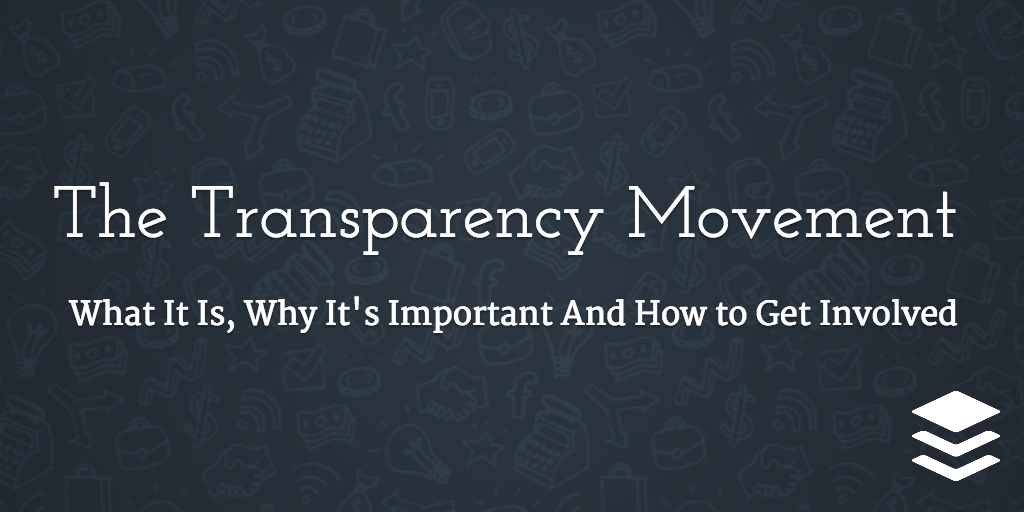
The start of a movement
Transparency within companies has been around for ages. Most notably, Whole Foods has made employee salaries available to everyone internally since 1986.
It’s the external that’s been picking up steam lately. That’s also what’s the most frightening for business owners.
Most of the public transparency for tech startups began around late-2013/early-2014.
Buffer’s first post on the Open blog, in April 2013, was about adding titles to their leadership team. Four months later they were sharing traffic numbers. Two months after that, they were all in sharing their revenue numbers…back when they were making $12,000 a month. Today they’re bringing in nearly $500,000.
Groove started their Journey to $100k blog in September 2013, when they made their revenue public and started documenting their progress as they grew. At the time, they were doing around $28,000 a month in revenue. Now they’re doing over $130,000.
At Baremetrics, we made our entire revenue dashboard public in February 2014 (Buffer followed a few months later). When we made our metrics public, we were barely making $3,000 a month. Now we’re doing north of $30,000.
Why transparency matters
There are two main groups of people for whom transparency is a major win.
Entrepreneurs: A new measuring stick
As great as the startup community is, there’s one thing it’s overflowing with that only hurts entrepreneurs: hype. You ask any entrepreneur how business is going and he or she will invariably tell you some form of “amazing.”
But statistically speaking, that’s impossible. A 90% failure rate is scary. And everyone telling each other they’re doing great isn’t helping anyone.
This is why transparency is a big win for entrepreneurs. It lays all the cards out on the table and gives new entrepreneurs a measuring stick to understand what “normal” is, or could be. It’s a way to show real world examples of how high churn hurts growth.
Customers: Confidence and accountability
For customers, being transparent adds humanity to what’s generally thought of as faceless. It keeps companies accountable instead of allowing them to hide unnoticed.
Transparency nurtures a certain level of responsibility on the part of the company. When companies are transparent, customers have a better idea of where their money is going. And when companies are failing left and right, transparency helps show customers who’s got their best interest in mind.
I believe it also can be a major motivator for businesses to do better, simply because they want to prove to customers that they’ve got a sustainable business.
The rewards of being transparent
Hopefully I’ve convinced you, at the very least, that transparency has the potential to be positive. But what are some actual, tangible benefits?
Let’s take a look at three companies I mentioned earlier: Buffer, Groove and Baremetrics.
Buffer: Press attention
Buffer started around late-2013 with their Open blog, and as you can see from the graph, that’s when you notice a change in their revenue trajectory.
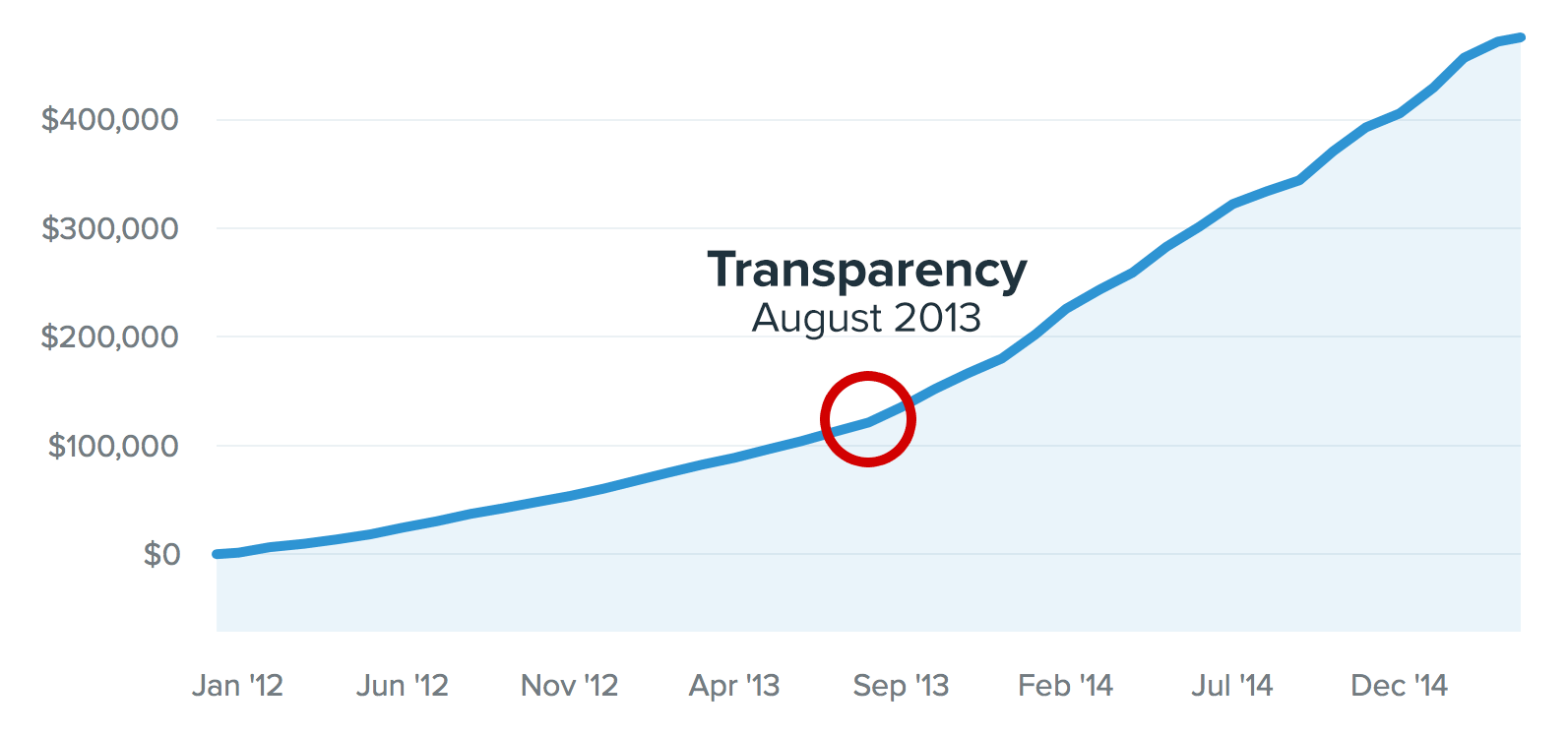
Transparency made Buffer a unicorn in the startup world and brought them a lot of attention, especially from the media.
Groove: Community involvement
My favorite thing about Groove’s transparency was the way they pitched it. Their live revenue progress bar made you want to root for them. The startup community rallied around their journey, and Groove grew their monthly recurring revenue from $30,000 to $100,000 in 15 short months because of the attention their transparency brought them.
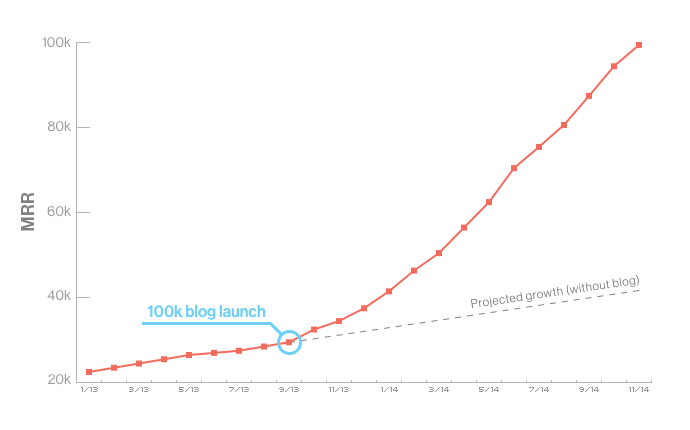
Baremetrics: An approachable product
For Baremetrics, the initial urge to be transparent honestly came out laziness. We have an analytics product, and I wanted a public demo that potential customers could use to try out our platform.
I could have spent days or weeks generating massive amounts of fake data…but I chose the lazy route and made our own dashboard the actual demo.
This paid off in a huge way. It made it much easier for customers to try out the platform, but past that, it led to major partnerships, such as Buffer making their dashboard public.
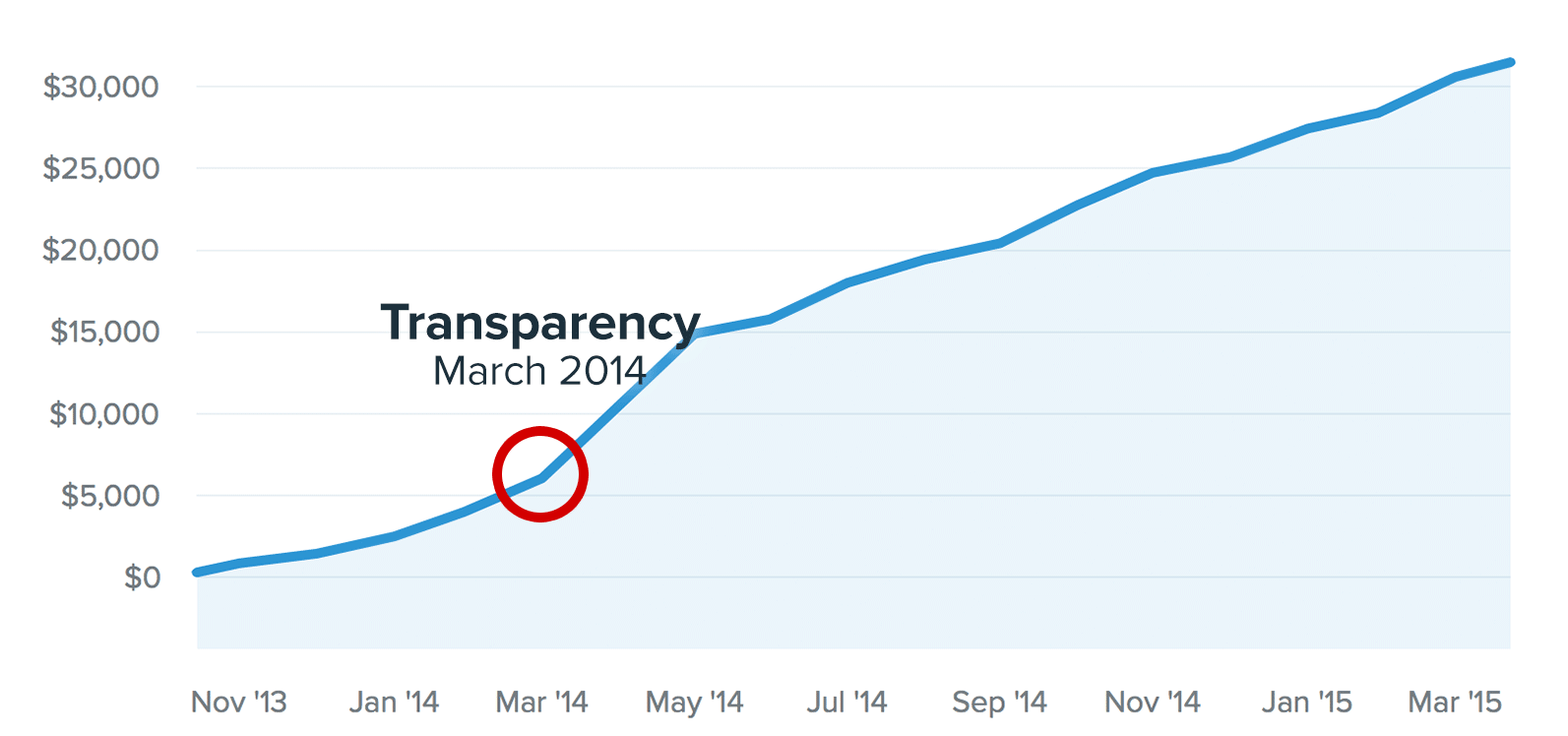
Given that our entire market is other businesses, using our own metrics as the demo made us much more approachable.
The risks of being transparent
Now, we can’t talk about rewards and transparency without mentioning a few risks. Being open with your numbers and your company is still a unique situation, and I know for us there have been some downsides.
Increase in competition. Within a few months of making our numbers public, similar products began coming out of the woodwork. It’s a common tendency to want to repeat success stories instead of making one’s own.
Now, I’d argue copycats aren’t actually a problem. There have been dozens of Baremetrics knockoffs in the year since we opened up our metrics. But none of them have had any sort of meaningful impact against us. I think customers are generally gravitate towards companies who are genuine.
Extra scrutiny. When everyone can see your numbers, there can be a tendency to make assumptions without understanding the full picture. You may have temporarily high churn at the moment that you’re well aware of and are OK with while you make changes to your business, but it could appear to others that your business is unhealthy.
Decrease in focus. Especially in the early days, you might need to be laser focused on building a solid product and business. It’s easy to get sidetracked publishing your metrics and touting your transparency when you might be better served making your product better.
It’s also easy to get worried about what others think about your business, which can be distracting.
These risks, for many startups, seem too daunting. For us at Baremetrics, we’ve felt the effects. But when looking at the big picture, the pros have far outweighed the risks.
How to support transparency
It’s a big step for an entrepreneur to be open with their metrics. For many it’s a scary move, namely because of those risks I mentioned.
To support the businesses that have made the move and to highlight how they’re doing, we’ve created the Open Startups initiative.
These companies are sharing all of their revenue metrics: MRR, ARR, LTV, churn, customers and more!
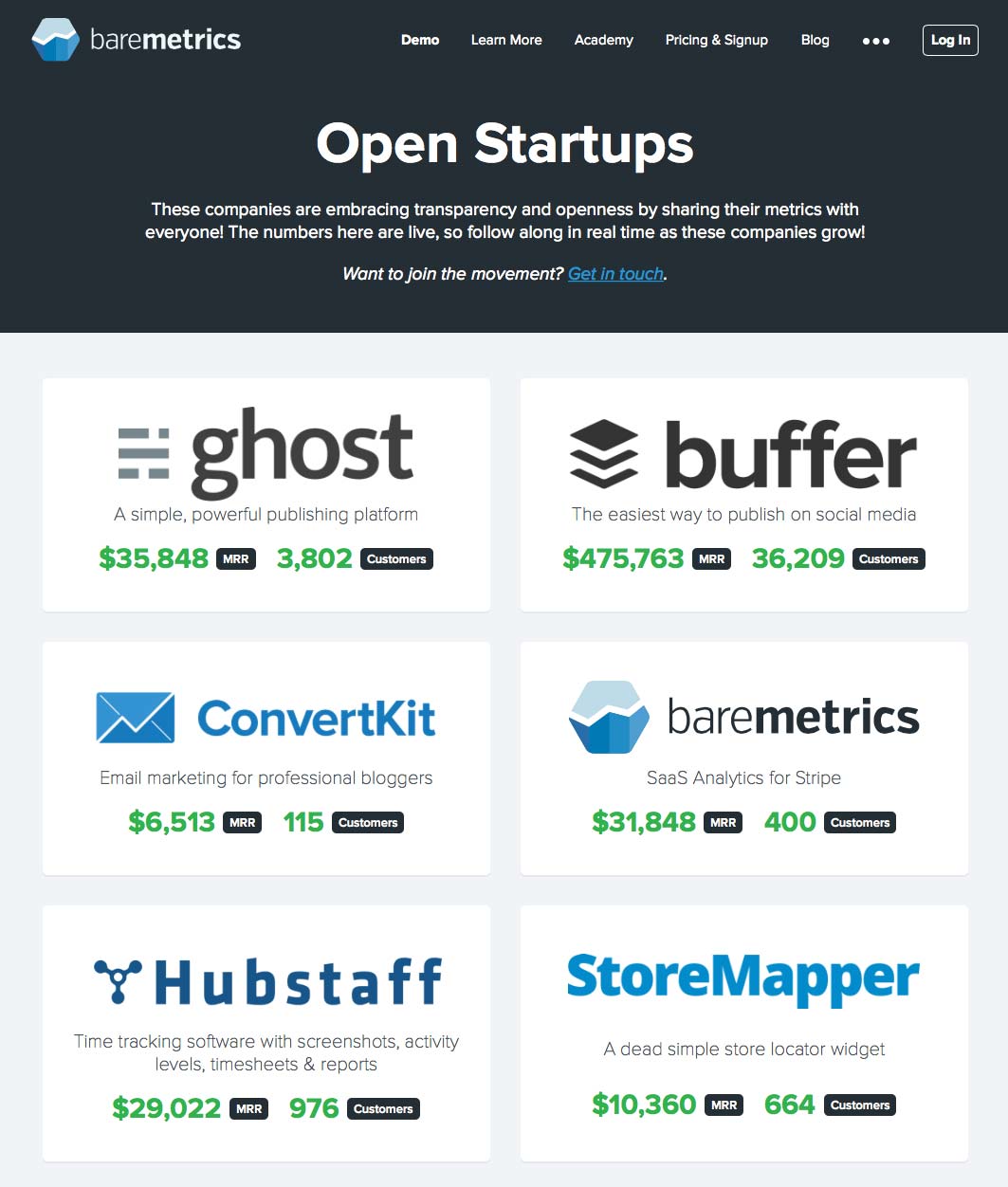
Read more about the initiative and if you’ve like to be involved, please get in touch.
What about you? Have you thought about being transparent at your company? What’s keeping you from doing it?
Try Buffer for free
190,000+ creators, small businesses, and marketers use Buffer to grow their audiences every month.


